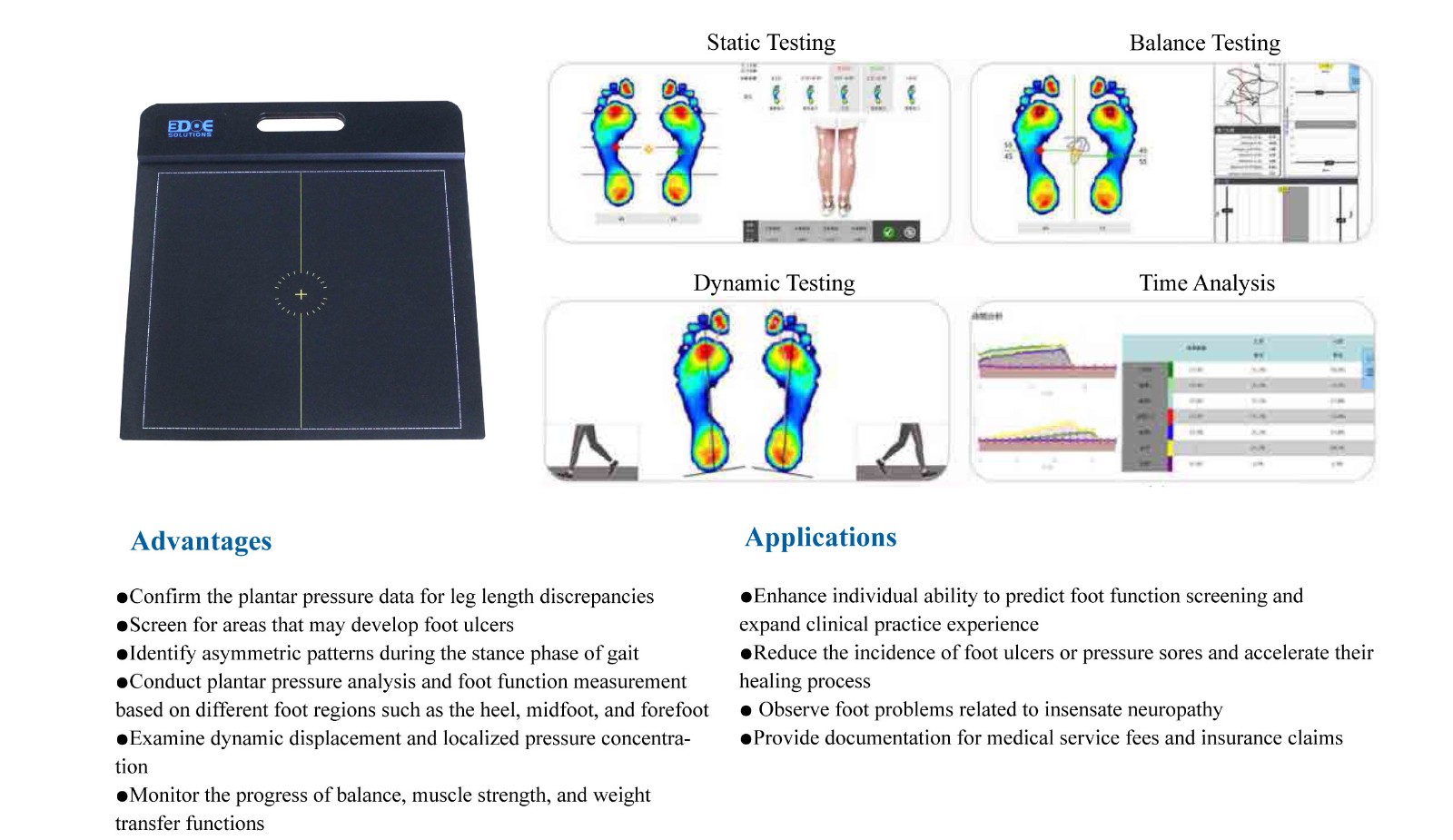The main functions of the plantar pressure distribution system can be understood from three dimensions: detection, analysis, and application.
The core functional points of the system are as follows:
I. Detection Functions
Static pressure measurement
Records the plantar pressure distribution of each region when an individual is standing quietly.
Can be used to evaluate center of gravity balance and weight-bearing differences between left and right feet.Dynamic gait detection
Collects the changes of plantar pressure over time during walking and running.
Can analyze the loading situation in the gait cycle (heel strike – arch transition – forefoot push-off).Center of pressure (COP) trajectory analysis
The system automatically calculates and draws the trajectory line of plantar loading center, reflecting gait stability and balance.
 II. Analysis Functions
II. Analysis Functions
Peak pressure and pressure region analysis
Accurately calculates the maximum loading points and average pressure of regions such as heel, arch, and forefoot.Used to identify abnormal high-pressure areas, preventing injury or ulceration.
Time parameter analysis
Counts the duration of each gait phase (such as stance phase, swing phase).
Provides comparative data to determine whether gait is coordinated.Symmetry and stability evaluation
Compares the differences between left and right feet in loading patterns and gait timing, helping to evaluate rehabilitation effects.Personalized data visualization
Converts pressure data into heat maps, 3D graphs, and curve graphs, intuitively showing analysis results.
III. Application Functions
Medical rehabilitation
Used for diabetic foot risk prediction and discovery of potential ulceration areas.
Assists in evaluating the rehabilitation progress of postoperative and sports injury patients.Sports science
Analyzes plantar loading in athletes’ stages such as starting, accelerating, and changing direction.
Guides training, optimizes movements, and reduces injury risks.Footwear/orthopedic product customization
Provides scientific basis for insole and orthopedic shoe design.
Realizes personalized arch support and cushioning design.Scientific research experiments
An important tool for biomechanics and kinesiology research.
Can be used in combination with motion capture, electromyography, and other systems to form a comprehensive dataset.

 +86-0755-86131192
+86-0755-86131192 2025-09-15
2025-09-15 Back to list
Back to list








 +86-0755-86131192
+86-0755-86131192